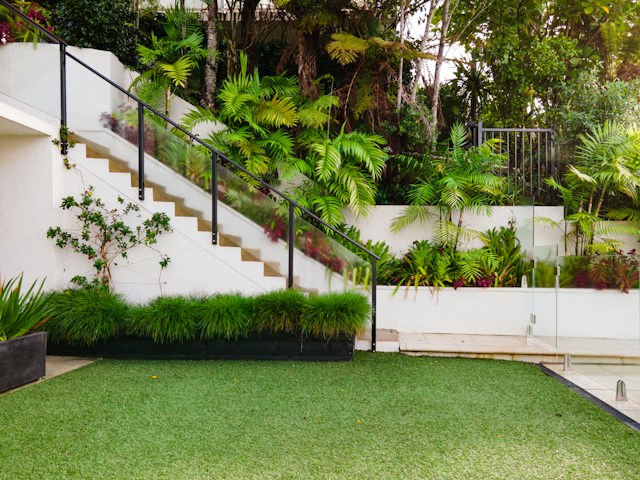Gone are the days when you had to water your garden manually. The 21st century has ushered in an era of smart technology, including intelligent irrigation systems that can save both time and water. Embracing the concept of smart irrigation can revolutionize the way you care for your landscape. This technology considers various factors like weather, soil conditions, plant type, and even anticipated rain to determine when and how much to water your garden. This article is designed to guide you on how to implement a smart irrigation system to conserve water in your garden.
The Importance of Water Conservation
The conservation of water is not just a mere act of being environmentally responsible. It has far-reaching benefits that transcend the confines of your garden. When you conserve water, you are also saving money, protecting the environment, and ensuring the future sustainability of this vital resource.
A voir aussi : How Can You Implement a Greywater Recycling System for Home Gardens?
Many homeowners overwater their lawns and gardens, a practice that is not only wasteful but can also be harmful to plants. Overwatering can lead to shallow root systems, making your plants less tolerant to dry conditions, and more prone to disease. A smart irrigation system can help regulate watering, ensuring that your plants get just the right amount of moisture.
Understanding Smart Irrigation Systems
Smart irrigation systems are a game-changer in the landscape industry. These systems use a combination of advanced weather sensors, moisture sensors, and smart controllers to automate the watering of your garden based on real-time conditions.
A lire en complément : What’s the Best Way to Use Smart Lighting to Enhance Home Aesthetics and Functionality?
Smart irrigation controllers, the brain of the system, use weather data to adjust watering schedules and amounts. They account for factors such as rain, wind, temperature, humidity, and evaporation. Some controllers even connect to WiFi, allowing you to manage your irrigation system from your smartphone.
Moisture sensors, on the other hand, are placed in the soil to measure its moisture content. They ensure that your plants are watered only when the soil is dry and save water by preventing watering when the soil is still wet from previous watering or rain.
Implementing Smart Irrigation in Your Landscape
The first step in implementing smart irrigation in your landscape is to evaluate your current irrigation system. You’ll need to determine if it’s possible to upgrade the existing system to a smart one or if you’ll need to install a brand new system.
Next, consider the specific needs of your plants and lawn. Different plants require different amounts of water and have different watering needs. For instance, lawn grasses often require more frequent watering than shrubs or trees. A smart irrigation system can be customized to cater to the needs of different plants within your garden.
It’s also important to factor in your local weather conditions. If you live in an area that receives regular rain, you may not need to water your plants as frequently. A smart irrigation system can adjust for these weather variations, ensuring that your garden is not overwatered.
Installing the smart irrigation system calls for precision. The controllers should be correctly connected to your water supply and the sensors should be strategically placed in the soil to accurately determine moisture levels. The entire system should be regularly checked and maintained for optimal performance.
Optimizing Your Smart Irrigation System
After installation, the work doesn’t stop there. To get the most out of your smart irrigation system, you need to continuously optimize it.
One way to optimize your system is by setting a watering schedule that suits your landscape’s needs. Each zone in your garden might require a different watering schedule based on the types of plants there and the soil type.
Another way to optimize your system is by adjusting the watering amount based on the season. In the hotter months, your plants will likely need more water. Conversely, in the cooler months, they will need less. Your smart irrigation system should be flexible to these changes.
Lastly, regularly checking and maintaining your system is crucial. This includes cleaning the sensors, checking for leaks in the system, and ensuring that the controllers are working correctly. Proper maintenance ensures that your system remains efficient and effective in conserving water.
Remember, implementing a smart irrigation system in your garden is a fantastic way to conserve water. It is a worthy investment that will not only save you money but also contribute significantly to preserving our environment.
Advanced Technologies in Smart Irrigation
Today’s smart irrigation systems have broken the boundaries of traditional watering methods with advanced technologies like soil moisture sensors, Wi-Fi-based controllers, and drip irrigation.
Soil moisture sensors, crucial components of smart irrigation systems, work by detecting the exact water content in the soil. This technology enables the system to provide just the right amount of water that your plants need. Over-watering or under-watering your garden can lead to plant stress, disease, and even plant death. By accurately determining soil moisture levels, these sensors prevent overwatering, thus conserving water and enhancing the health of your landscape.
Wi-Fi-based controllers are another sophisticated aspect of smart irrigation systems. These devices get connected to your home’s Wi-Fi system, enabling you to control your irrigation system remotely through your smartphone. Besides providing convenience, these controllers also promote water efficiency by adjusting water usage based on real-time weather data. For instance, if the forecast predicts rain, the system can automatically postpone watering your lawn, saving valuable water.
Lastly, drip irrigation systems play a vital role in smart irrigation. Unlike traditional irrigation methods that disperse water over a large area, drip irrigation delivers water directly to the root zone of plants. This precise watering method minimizes water wastage through evaporation or runoff, thus contributing significantly to water conservation.
Conclusion: Embrace Smart Irrigation for a Water Efficient Garden
In conclusion, smart irrigation systems offer an innovative and eco-friendly solution for maintaining your garden. These sophisticated systems not only conserve water but also ensure the optimal health of your landscape by providing just the right amount of water your plants need.
From advanced soil moisture sensors, Wi-Fi-based controllers to drip irrigation, smart irrigation technology optimizes water efficiency in your garden. With the ability to adapt to weather conditions and soil moisture levels, these systems drastically reduce water wastage and overwatering, promoting healthier plant growth and saving you money in the long run.
It’s essential to remember that implementing a smart irrigation system requires careful planning, precise installation, and regular maintenance. Optimizing your system according to the specific needs of your garden, season, and local weather conditions is key to ensuring its effectiveness and efficiency.
Embracing smart irrigation is an investment in water conservation, environmental sustainability, and the future of your garden. So take the leap, and let smart irrigation technology revolutionize your approach to garden care. You’ll be rewarded with a vibrant, healthy landscape that’s maintained with minimal effort and maximum water efficiency.













